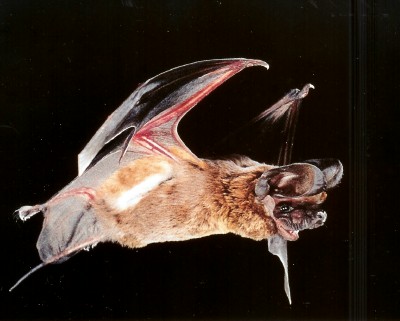
Cabeza Prieta Natural History Association
Sonoran Desert Mammals

Big free-tailed bat
(Tadarida macrotis)

|
Diet: primarily large moths, but may include crickets, flying ants, stinkbugs and leafhoppers
Size: weight is 25-30 grams (0.9-1.1 ounces) wingspan is 42-46 centimeters (17-18 inches) Active Period: nocturnal |
The big free-tailed bat inhabits rocky country, where it roosts in crevices high up on cliff faces.
This bat leaves its roost late, when it is quite dark. As the species is incapable of hibernation, the northern populations are believed to be migratory.
This bat is a fast and powerful flier, and after the young are weaned, individuals may appear hundreds of kilometers beyond what seems to be the usual range.
When foraging, the big free-tailed bat usually emits a loud piercing chatter. Parasites include bat bugs and fleas. Females, who give birth to one baby in June or July, form maternity colonies. The species is uncommon throughout most of its range.
This article is from "Bats of the United States", 1999, by Michael J. Harvey of Tennessee Technological University, J. Scott Altenbach of the University of New Mexico, and Troy L. Best of Auburn University. Published by the Arkansas Game & Fish Commission, in cooperation with the Asheville Field Office of the U.S. Fish and Wildlife Service.
Photo Credit:
Photo #1
Copyright Creative Commons
HTML & Programing by
Thomas R. Powell